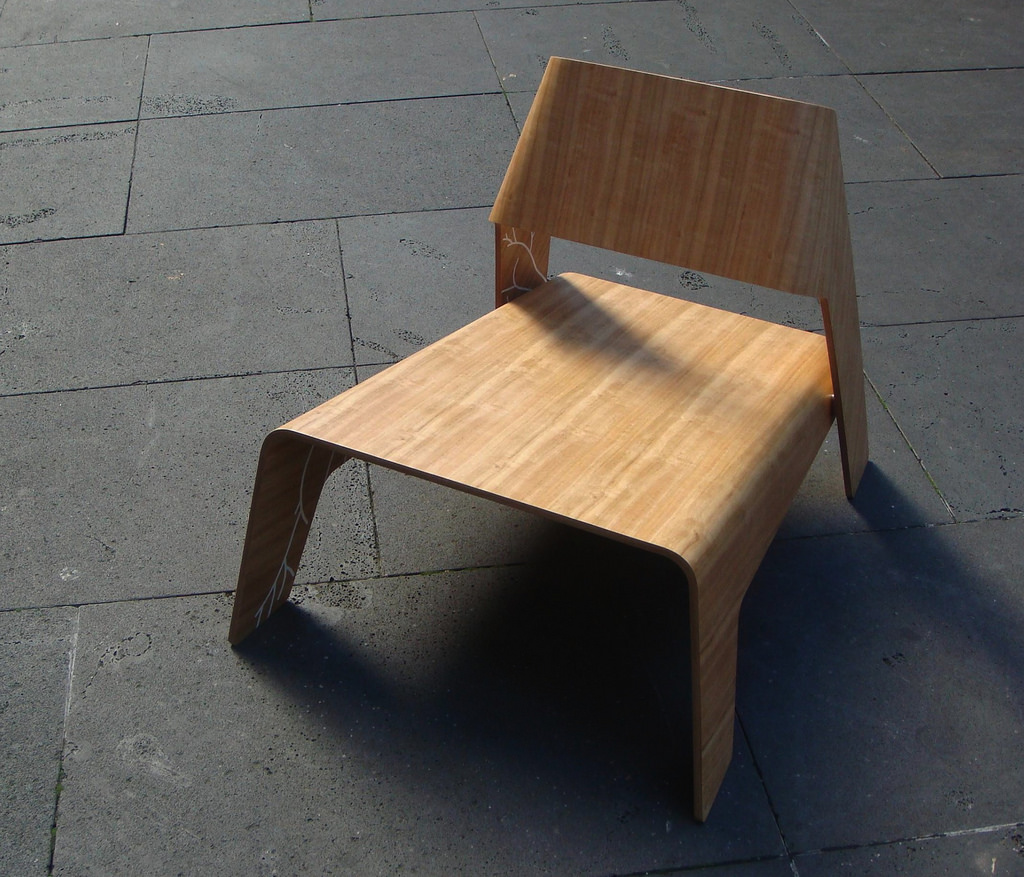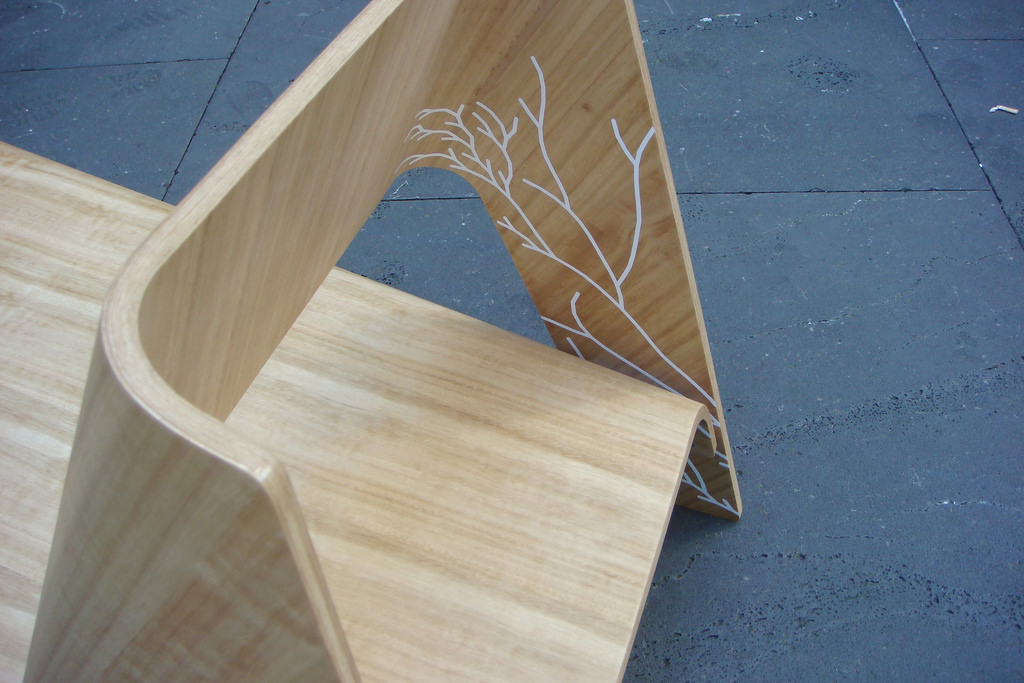A short essay on craft, making and digital fabrication in Craft Australia eNews 54 (August 2010) - an essay commissioned for Craft Australia's 40th anniversary, celebrating innovation in contemporary craft.

Traditionally, craft practice has kept its means of production literally close at hand, cultivating an expert and intimate relationship between maker, materials and processes. Also traditionally, manufacturing and mass production have increased the distance between maker and made; the maker becomes a designer whose instructions are carried out by human or mechanical others. Making is broken into uniform and rationalised parts and processes, with huge gains in efficiency. The resulting material culture of course is all too familiar to us. We depend on it for our everyday existence, even as it threatens to bury us in its waste.
In recent years however this traditional relationship between craft and manufacturing has become much more complex. Automated production is no longer necessarily mass production; an increasing range of micro-manufacturing techniques enable makers to produce unique objects using automated processes. Online services and communities have sprung up that make digital fabrication widely accessible. At the same time sophisticated manufacturing processes are becoming smaller and cheaper, enabling makers to get hands-on with a new set of tools and materials.
The key factor in these changes is networked computing; these changes show how the digital, which we typically imagine as immaterial, is transforming our relationship with the physical world. Wired magazine's Chris Anderson recently declared that "in the next industrial revolution, atoms are the new bits." The changes played out on the Web over the past decade have had a strong theme of openness, inclusion and participation - as Marcus Westbury has pointed out, these changes have had a significant impact on craft practice already. Anderson argues that the same changes are now transforming the way we work with materials and objects.
Ponoko is a web-based service that illustrates many of these ideas. At one level, Ponoko is essentially an online laser-cutting service. Users can upload designs and select from a range of materials including card, felt, acrylic, timber and metal; Ponoko fabricates the designs and ships the finished piece back. At this level, their service is comparable to a local laser shop, but there are a few key differences. Ponoko make the whole process as accessible as possible, providing detailed information and instructions at every turn. Their tone is unambiguous: "all welcome". Some basic drawing software, an internet connection and a credit card is now all you need to start laser cutting.
From the outset however, the founders of Ponoko recognised that this was more than an online cutting bureau. Makers using Ponoko have the option of publishing their designs on the site, and licensing them on for a fee. With a catalogue of tens of thousands of designs, Ponoko is also a retailer that manufactures on demand, and an online shopfront for hundreds of designers and makers. An Australian maker can sell their work in Montreal or Lisbon as easily as Melbourne or Sydney; Ponoko has manufacturing arms in Europe, New Zealand, the USA and UK, and ships from whichever is nearest to the client. This global reach might have makers imagining international fame and fortune; but the reality is Ponoko works best for small-scale producers. There are cheaper ways to manufacture a thousand laser-cut widgets, but perhaps no better way to publish, promote and produce a boutique product that is made and shipped only as required. This is global micro-manufacturing; a networked makers market, like Etsy, but linked to sophisticated on-demand production.
Shapeways is another interesting example; like Ponoko, their service combines an online fabrication bureau with excellent support, makers' shopfronts and a lively and supportive community. Shapeways however offers 3d printing services. Technically 3d printing spans a range of processes including Selective Laser Aggregation, Stereolithography and Fused Deposition Modelling; in these processes a material is deposited in ultra-precise layers to build up a solid three-dimensional form. Materials are often plastic or nylon, but now include metals and metal hybrids, and even glass. While 3d printing is not a new technology, it has been prohibitively expensive and difficult to access. Shapeways, a spinoff from Dutch giant Philips, changes all that. Shapeways have made SLA and stereolithography extremely affordable, with pricing automatically calculated by volume; designers like American duo Nervous System use it to produce their astounding jewellery. Services like Shapeways also enable makers to explore more exotic processes including 3d-printed stainless steel and glass.
As the work of Nervous System also shows, digital fabrication is about more than production; it enables new approaches to form generation that exploit digital methods and materials. In the case of Nervous System, custom software modelled on natural systems is used to generate complex, organic geometry. In some of my recent work forms are derived from environmental data; with 3d printing we can make structures and patterns in large datasets literally tangible. Weather Bracelet presents a year's worth of Canberra weather data (temperature and rainfall) in a small, wearable form.
Digital fabrication services have the potential to transform craft practice, both technically and commercially. But having used them, I am also struck by how this networked production changes the maker's experience. Even with a mountain of online documentation, one can't touch the materials or feel the surfaces. After uploading designs and pressing "order", the objects arrive in the post as if from nowhere. When some laser-cut ply forms arrived from Ponoko I was immediately struck by the toasty smell of charred wood; for anyone who knew the process this wouldn't be surprising, but as a novice it was a revelation. So far, all my surprises have been pleasant - and based on feedback from users these services deliver very high quality results - but mail-order making certainly feels different to a more hands-on process.
Happily the same transformations that are making digital fabrication services more accessible also apply to fabrication processes and equipment. To some extent this is simply more of the same, in technological terms; cheaper, better and faster is simply what we have come to expect. 3D printing in particular is becoming far more affordable. Several companies are vying to create a mass-market 3D printer; Hewlett Packard recently entered the field with a desktop-sized machine that costs around $20,000. Laser cutters, CNC routers and the like are also dropping in price.
But for makers interested in getting their hands on digital fabrication, the real revolution lies in open hardware. Open source software has transformed the digital world in the past decade with an approach that seems baffling: huge teams of volunteers create high-quality software, and distribute it along with the source code that enables others to build on their work. Imagine the same approach applied to physical products; or better still, to tools and equipment. The RepRap is an open source 3D printer; download the plans and software from the project website for free, source the necessary parts, and you can build your own 3D printer for less than $1000. The "rep" in RepRap is short for replicator - the idea being that the printer can actually manufacture all the parts needed to create itself. This is some way off - mainly because the machine currently can't print electronics - but for RepRap originator Adrian Bowyer the concept is central to the project, and its aim to make desktop 3D printing not only affordable, but open and self-reproducing. The RepRap project has already spawned a number of variants, including the MakerBot; and a rich ecosystem of makers, hackers, tinkerers and small businesses has sprung up around it, supplying parts, kits and materials. For larger-scale work, you could even build your own CNC router or laser cutter.
Aside from affordable, do-it-yourself kits, the real promise of open hardware is its adaptability. While most manufacturers frown on users tinkering with their products, open hardware projects actively encourage it. The potential for makers here is boundless. For example Belgian designers Unfold have developed an experimental RepRap modified to print ceramic, and are sharing their work in open source style. For artists and makers, innovation in technique is now taken for granted - mastery of materials and processes is a benchmark for professional practice. In cracking open the "black box" of proprietary technology, open hardware and similar approaches offer a way for makers to get hands-on with digital tools and bring new processes into their repertoire.
The work of Canberra designer and furniture maker Chris Hardy - a colleague of mine at the University of Canberra - provides one example of how makers are using and combining these networked approaches. Hardy's work combines hand-making, automated fabrication, and locally and internationally sourced components. In his Regenerate chair, Hardy began with a locally sourced example of Marcel Breuer's signature Cesca design. After developing a CAD model based on the found object, Hardy generated angular new forms for the seat and back, echoing the cane weave of the original chair. After being broken into interlocking components to fit the constraints of the printing process, these were 3D printed at Shapeways, then reassembled and fixed to the original Cesca frame.

For Oru (pictured), another recent chair, Hardy began with hand-laminated and vacuum-formed hardwood components; these were modelled in detail in CAD software, but adjusted significantly after being formed. The seat and back are joined at each side with an assembly that includes an aluminium plate CNC machined by RPWorld in Beijing, and a matching timber component laser-cut on a machine recently installed in the University's workshop. Finally, I worked with Chris to create a tree-like generative pattern to spread over the underside and back of the chair; after testing in laser-cut paper, the pattern was cut in vinyl by a local sign manufacturer; then carefully applied to the chair - again, with plenty of manual adjustment.
As Hardy's work shows, networked production and digital design operate in tandem with hand-making; and for all the functional efficiency of the digital process, many crucial decisions still occur in the physical relationship between maker and object. Depending on technique, timeline, and cost, elements may be sourced locally or internationally, or created from scratch in the workshop. Unlike outsourcing, where a solution or service is abstracted, this making involves a specific and deliberate integration, drawing on the provenance of each material and process. Weaving together these networks of production becomes part of the making process itself.